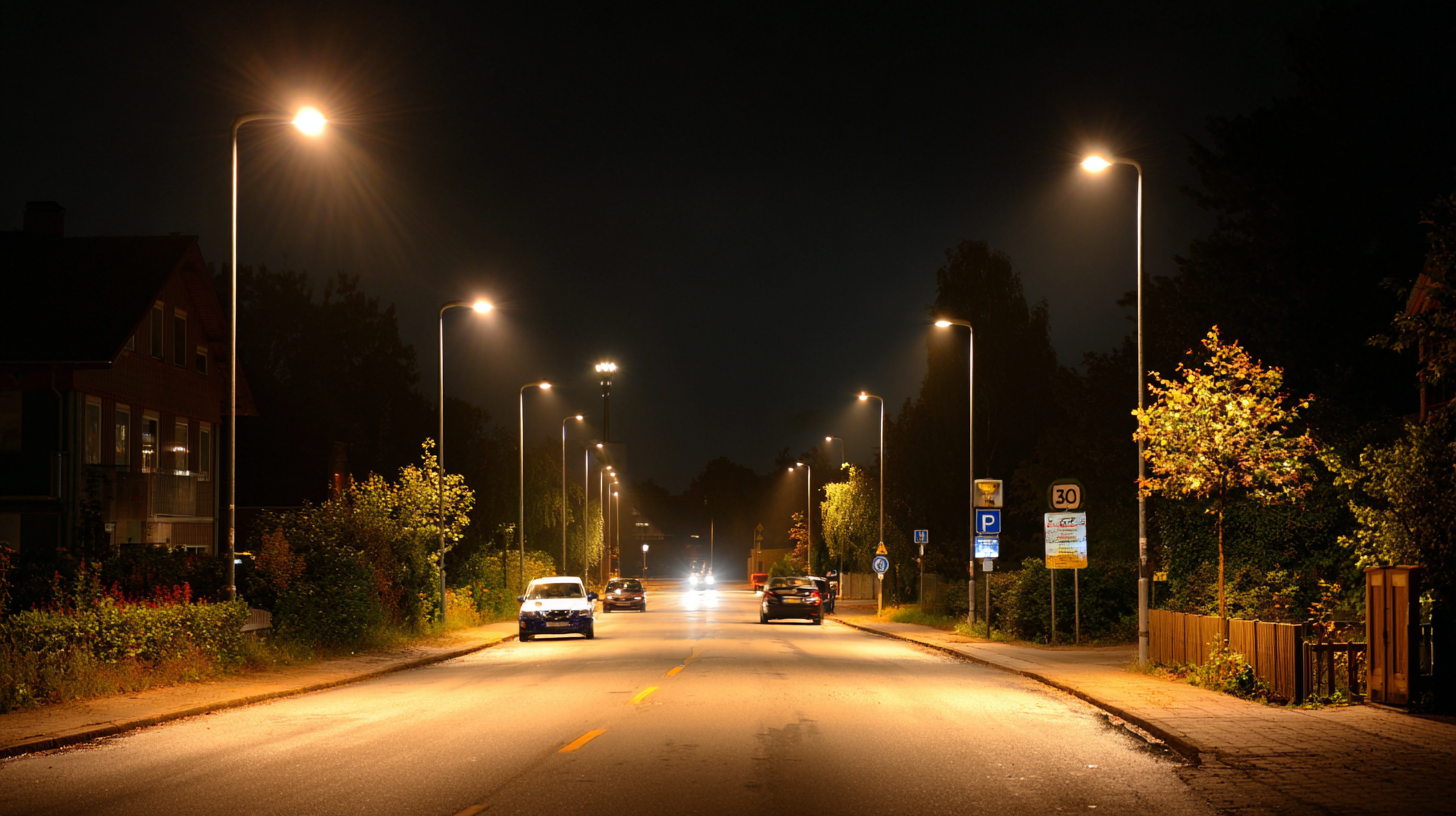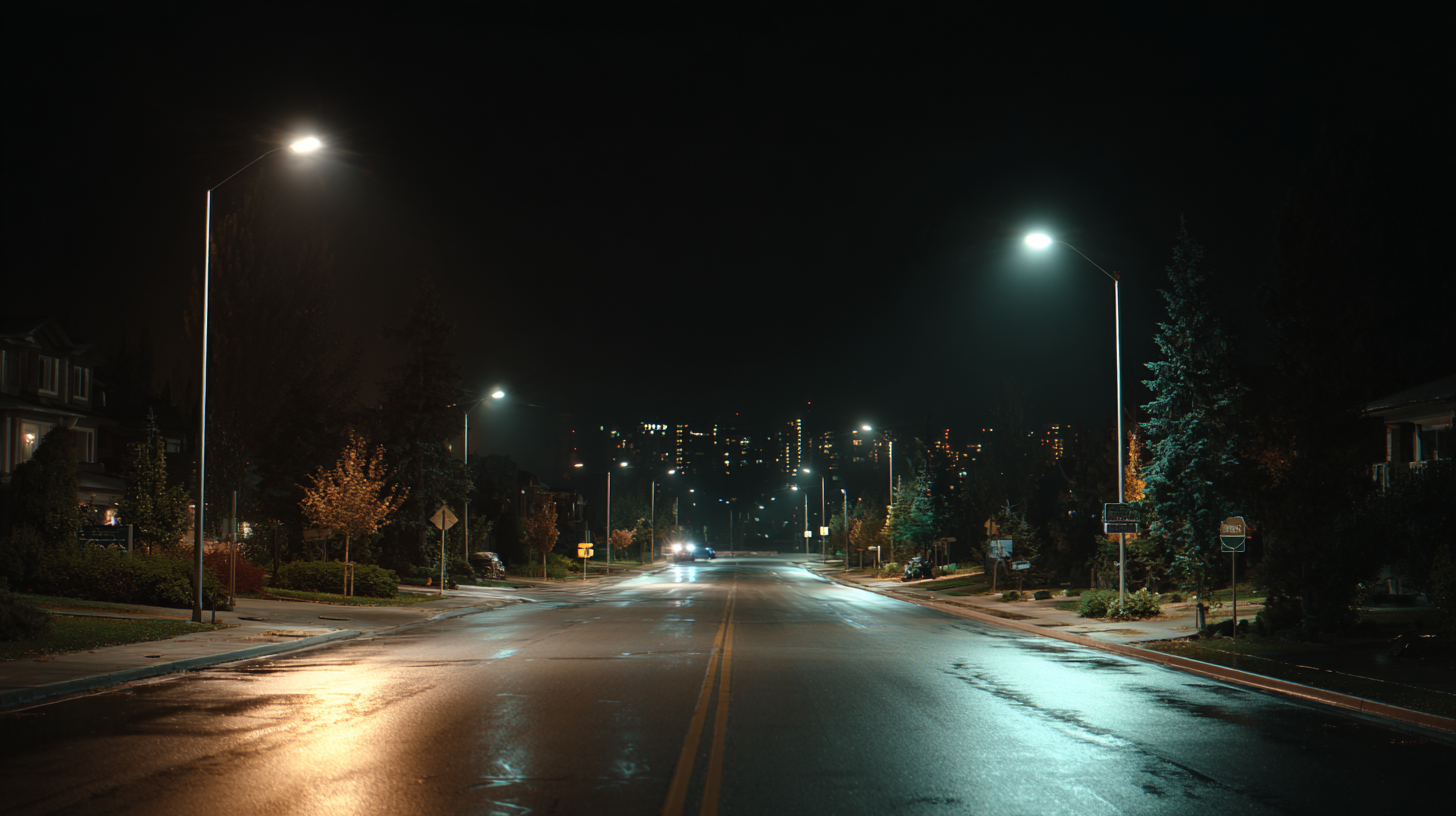The Future of Best LED Street Lights in 2025 A Comprehensive Comparison of Top Innovations
As we approach 2025, the landscape of urban lighting is set to undergo a transformative shift, driven by advancements in LED technology. According to a report by the International Energy Agency, the global market for LED street lights is projected to reach $10.3 billion by 2025, reflecting a compound annual growth rate of 17%. This surge is fueled not only by the need for energy efficiency but also by the integration of smart city technologies that enhance safety and sustainability. Innovations such as adaptive lighting systems, IoT connectivity, and advanced sensor technologies are poised to redefine the functionality of LED street lights, making them crucial components of modern urban infrastructure.

This blog will provide a comprehensive comparison of the top innovations in LED street lights, shedding light on how these advancements will shape the future of urban environments in the years to come.
Emerging Technologies Revolutionizing LED Street Lighting in Urban Areas
As we look towards 2025, the landscape of LED street lighting is rapidly evolving, driven by innovative technologies that enhance energy efficiency and urban aesthetics. Emerging solutions like smart lighting systems, which can adjust brightness based on real-time data, are becoming the norm in cities worldwide. These systems not only save energy but also improve public safety by increasing visibility during peak hours, making urban areas more secure and inviting.
Tip: Consider incorporating motion sensors in LED street lights to optimize energy usage. By dimming lights when no pedestrians are present, cities can significantly reduce their power consumption, leading to lower operational costs and a smaller carbon footprint.
Another exciting trend is the integration of renewable energy sources, such as solar-powered LED street lights. As cities strive for sustainability, these lights are proving to be a viable alternative, especially in areas where access to the grid is limited or non-existent. Combining solar panels with energy-efficient LED technology not only cuts down on energy costs but also promotes a greener urban environment.
Tip: When selecting LED street lights, pay attention to their color temperature. Warmer light (around 3000K) is often more appealing and provides better visibility without the harsh glare that cooler lights can produce, ensuring a more pleasant urban experience.
The Future of LED Street Lights in 2025
Comparative Analysis of Energy Efficiency: LED vs. Traditional Street Lights
As cities evolve towards smarter and more sustainable solutions, the transition from traditional street lights to LED technology has gained momentum. A recent report by the U.S. Department of Energy indicates that LED street lights consume up to 50% less energy than their conventional counterparts, translating to significant cost savings for municipalities. For instance, while traditional high-pressure sodium street lights may draw around 250 watts, LED lights can achieve the same luminosity with only about 120 watts. This not only reduces energy consumption but also lowers greenhouse gas emissions, aligning with global sustainability goals.

Moreover, the longevity of LED lights offers another compelling advantage. According to the International Association of Lighting Designers, LED street lights can last over 20 years, significantly outperforming traditional bulbs, which typically require replacement every three to five years. This durability further enhances their cost-effectiveness, reducing maintenance costs and ensuring more consistent lighting over time. Thus, the comparative analysis of energy efficiency underscores the future potential of LED street lights as municipalities seek innovative solutions to improve public infrastructure while being mindful of budgetary and environmental constraints.
Key Industry Case Studies Showcasing the Benefits of LED Street Lighting
As cities strive to embrace sustainability, LED street lighting has emerged as a pivotal innovation in urban infrastructure.
Key industry case studies highlight the numerous benefits associated with this technology.
For example, the city of Los Angeles undertook a massive LED conversion project that reduced energy consumption by over 60%.
This switch not only led to significant cost savings but also drastically decreased carbon emissions,
demonstrating how municipalities can align urban development with environmental stewardship.
Another notable example is the city of Barcelona, which implemented smart LED street lights equipped with sensors that adjust brightness based on pedestrian and vehicular traffic.
This innovation not only enhances safety and visibility during nighttime but also further reduces energy expenditure.
These case studies underscore a critical trend: the integration of smart technology within LED street lighting is not merely an upgrade;
it's a comprehensive solution that addresses energy efficiency, public safety, and overall urban livability.
By showcasing these advancements, it's evident that the future of LED street lighting will shape smarter, more sustainable cities in the years to come.
Future Innovations: Smart Lighting Systems and Their Impact on Public Safety
As we look towards 2025, smart lighting systems are set to revolutionize urban environments, enhancing public safety in profound ways. These innovative systems utilize advanced technology to adapt light levels in real-time, reacting to the presence of pedestrians and vehicles. By dynamically adjusting illumination, smart lights can deter criminal activity and create a safer atmosphere for communities.
Tip: Implementing smart lighting in high-crime areas can significantly reduce unwanted incidents. Engage local authorities to assess key locations where such systems would make the most impact.
Moreover, the integration of Internet of Things (IoT) capabilities allows street lights to communicate with one another and with city management systems. This interconnectedness facilitates efficient monitoring and maintenance, ensuring that any malfunctioning lights can be quickly repaired. Additionally, the data collected from these systems can provide valuable insights into traffic patterns and pedestrian behaviors, further informing urban planning decisions.
Tip: Encourage community involvement by hosting workshops to educate residents on the benefits of smart lighting. Gather feedback on proposed installations to enhance community trust and involvement.

Sustainability Metrics: Environmental Benefits of LED Street Lights by 2025
As we look towards 2025, the environmental benefits of LED street lights are set to become even more significant. In an era where sustainable practices are not just encouraged but required, LED technology provides a powerful solution to municipal lighting challenges. These energy-efficient lights consume up to 75% less energy than traditional street lamps, drastically reducing electricity costs and lowering greenhouse gas emissions. As cities adopt LED lighting, the cumulative effect on energy consumption could lead to a substantial decrease in carbon footprints, fostering healthier urban environments.
Moreover, the longevity of LED street lights contributes further to sustainability. With lifespans often exceeding 25,000 hours, these lights require less frequent replacements, which diminishes waste associated with manufacturing and disposal. Innovations in smart lighting technologies are also on the horizon, allowing for adaptive lighting that adjusts based on traffic patterns and weather conditions. This not only optimizes energy use but also enhances safety and reduces light pollution, promoting biodiversity in urban areas. By prioritizing such sustainable metrics, cities are paving the way for a greener future, demonstrating that effective urban planning can harmoniously coexist with environmental stewardship.
The Future of Best LED Street Lights in 2025
| Feature | Current Standard (2023) | Future Standard (2025) | Environmental Benefits |
|---|---|---|---|
| Lumen Output | 80-150 lm/W | 150-200 lm/W | Higher efficiency reduces energy consumption |
| Average Lifespan | 50,000 hours | 100,000 hours | Less frequent replacements reduce waste |
| Smart Features | None | Integrated sensors for adaptive lighting | Optimized energy use based on real-time data |
| Color Temperature | 3000K | 4000K-5000K | Improved visibility and reduced light pollution |
| Recyclability | 20% | 95% | Less environmental impact from disposal |
